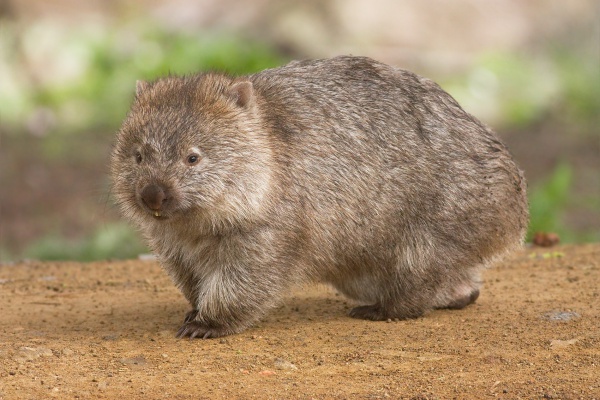Facts About Common (Forest, Naked-nosed) Wombat
The common wombat, also known as the coarse-haired or bare-nosed wombat, is a captivating marsupial belonging to the genus Vombatus. It is one of three extant wombat species. Typically, these wombats grow to about 98 cm (approximately 3 feet) in length and weigh around 26 kg (about 57 pounds).
First described by George Shaw in 1800, the common wombat is classified into three recognized subspecies, though their distinctions are somewhat debated. These subspecies include V. u. hirsutus on mainland Australia, V. u. tasmaniensis in Tasmania, and V. u. ursinus on Flinders Island. Another species, Hackett's wombat (Vombatus hacketti), went extinct at the end of the Late Pleistocene.
Common wombats inhabit various regions of southern and eastern Australia, including Tasmania, and can be found in mountainous areas as far north as southern Queensland. These adaptable creatures thrive in diverse habitats such as rainforests, eucalyptus forests, woodlands, alpine grasslands, and coastal areas. They have also adjusted well to farmland environments.
Physically, common wombats are stocky, ground-dwelling animals. They range from 80 to 130 cm (approximately 2.6 to 4.3 feet) in length and weigh between 17 and 40 kg (about 37 to 88 pounds). One of their distinguishing features is their bald noses, which differentiate them from other wombat species.
In terms of behavior, common wombats are solitary and territorial. They dig intricate tunnel systems within their territories. These animals are primarily nocturnal but can be active during cooler parts of the day. Their diet mainly consists of grasses, snow tussocks, and various other plant materials.
Regarding reproduction, common wombats breed every two years, usually giving birth to a single joey. The young stay in the mother's pouch for about five months and are weaned at around 12 to 15 months of age. In the wild, wombats typically live for about 15 years, although they can reach up to 20 years in captivity.
